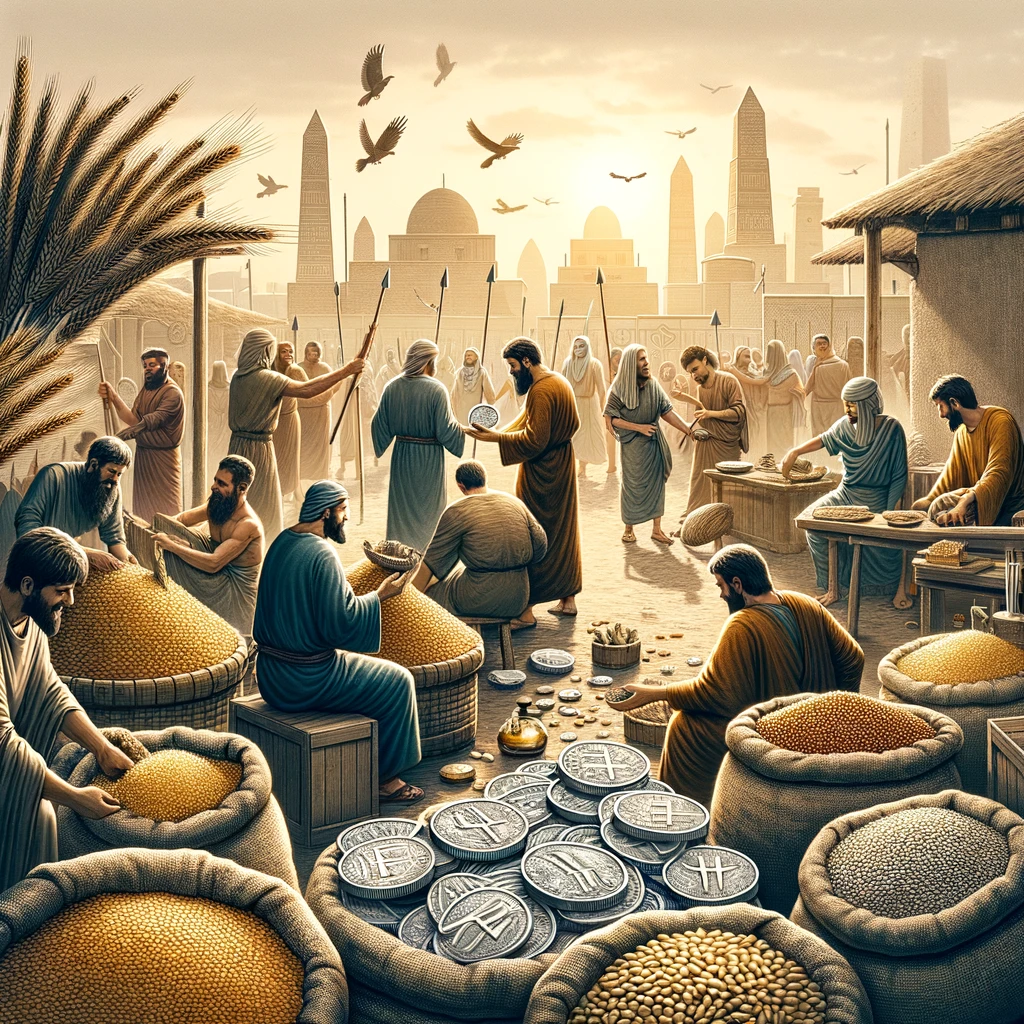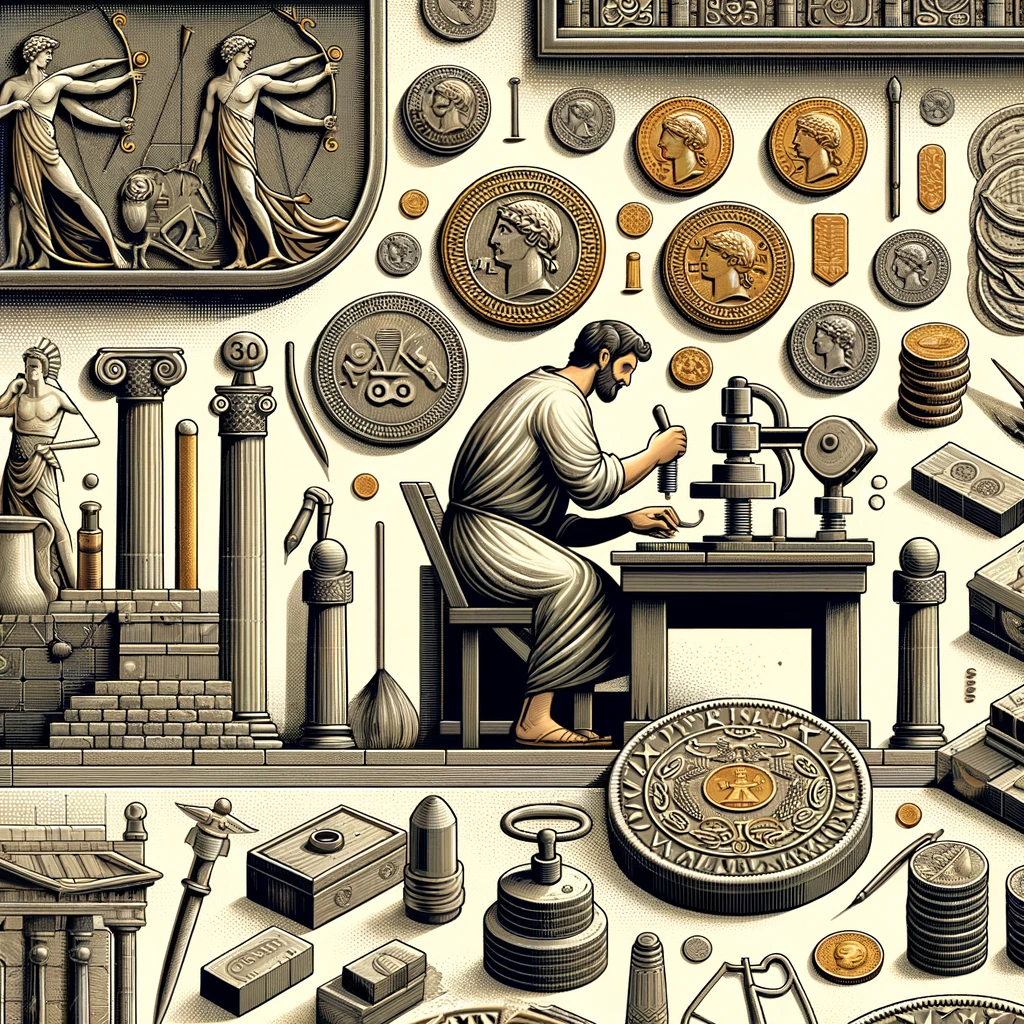Where was money first used? Money, in its various forms, was first used in ancient Mesopotamia, around 3000 BCE. The Sumerians, inhabiting what is now modern-day Iraq, developed a complex system of trade and commerce that necessitated the creation of a standard medium of exchange. This early form of money came in the shape of barley, silver, and other commodities, marking the beginning of recorded financial transactions and the concept of monetary value.
The Evolution of Money: From Barley to Coinage

The inception of money can be traced back to ancient agricultural societies, where the need for a reliable method of trade and transaction led to the use of commodities as a universal medium. In Sumer, barley was a key agricultural product and served as a primary form of money. People would trade goods and services for specific amounts of barley, which had a universally recognized value within the community. However, as trade expanded, carrying bags of barley became impractical, prompting the use of more portable forms of money.
Silver soon replaced barley as a more convenient standard of value due to its durability, divisibility, and portability. This transition marked a significant evolution in the concept of money, moving from perishable goods to precious metals. The use of silver necessitated the development of standardized weights and measures, laying the groundwork for a more sophisticated economic system.
The Invention of Coinage

The invention of coinage marks a pivotal moment in the history of economic transactions and the development of civilizations. This innovation emerged in the ancient kingdom of Lydia, located in what is now western Turkey, around the 7th century BCE. The Lydians created coins from electrum, a naturally occurring alloy of gold and silver, which were stamped with official symbols to certify their authenticity and value. This groundbreaking method of standardizing value revolutionized trade, enabling transactions to be conducted with unprecedented ease and reliability.
Before the advent of coinage, trade was largely based on the barter system, where goods and services were directly exchanged. This system had inherent limitations, notably the need for a double coincidence of wants—the unlikely scenario where each trader desires what the other offers. The introduction of coins as a medium of exchange eliminated this constraint, facilitating smoother and more versatile trade interactions. Coins could be easily transported, divided, and stored, representing a significant advancement over previous forms of money, such as grain or livestock, which were cumbersome and perishable.
The standardization of coins also introduced a new level of trust in economic transactions. The symbols stamped on coins, often representing the authority of the ruling power, guaranteed their weight and purity. This trust facilitated the expansion of trade networks, contributing to the growth of cities and the development of complex economies. Furthermore, coinage enabled the accumulation of wealth and the quantification of prices, leading to the emergence of new social structures and economic classes.
The Lydian innovation quickly spread to neighboring civilizations, including the Greek city-states, where it was refined and popularized. Each city-state minted its own coins, featuring distinctive designs that reflected their culture, beliefs, and achievements. These coins were not only tools for trade but also means of communication, conveying political messages and demonstrating the wealth and power of their issuers.
The invention of coinage was a transformative development that significantly impacted the economic, social, and political landscapes of ancient civilizations. By facilitating trade, promoting economic growth, and enabling the storage of wealth, coinage laid the foundational principles of modern monetary systems. Its legacy continues to influence the way transactions are conducted today, underscoring the lasting importance of this ancient innovation.
The Impact of Money on Civilization

The introduction of money as a universal medium of exchange had profound implications for the development of human societies. It facilitated the expansion of trade, both locally and internationally, contributing to the growth of economies and the emergence of cities as centers of commerce. Money also allowed for the accumulation of wealth, leading to the development of social hierarchies and the concept of personal property.
Furthermore, the need to store and manage money led to the establishment of banks and financial institutions, which played a crucial role in the economic development of civilizations. The concept of interest on loans, investment, and financial speculation can all be traced back to the early use of money.
The use of money in ancient Mesopotamia laid the foundation for the complex economic systems that define modern life. From barley to silver and from coins to digital currency, the evolution of money reflects humanity’s ingenuity in developing tools to facilitate trade, measure wealth, and shape societies. As we continue to innovate, creating new forms of currency like cryptocurrencies, the history of money offers valuable insights into the fundamental principles of economy, value, and human interaction.

